"If all you have is a hammer, then every problem begins to look like a nail." - Abraham Maslow
Strain / Counterstrain (Jones Technique)
Strain/Counterstrain (SCS) is the first technique I learned from my clinical instructor, Stella Giles, and it opened my heart to the infinite possibilities of healing where gentle touch is the key. The formula is simple: find a tender point, shorten the muscle, ideally to where there's no more pain, and hold it until it releases. Proceed like this, from the most tender, until all tender points are released from the system. While simple and gentle, SCS can reprogram the proprioceptive systems so that the brain can access the body musculoskeletal system properly.
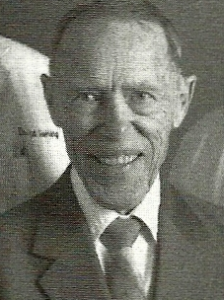 Dr Lawrence Jones, founder of Strain/Counterstrain
Dr Lawrence Jones, founder of Strain/Counterstrain
Craniosacral Therapy
Craniosacral Therapy (CST) uses gentle pressure to promote proper micro-movement of joints, improve circulation of cerebrospinal fluids, and balance fascial tensions in the body. A torque in the fascial system, whether residing in the soft tissues or in bones, can result in symptoms such as pain, sensory disturbances, headaches, irritability, fatigue, etc.
 Dr John Upledger, DO, Founder of CranioSacral Therapy & SomatoEmotional Release
Dr John Upledger, DO, Founder of CranioSacral Therapy & SomatoEmotional Release
Somato-Emotional Release
Somato-Emotional Release (SER) is an advanced CST technique. The craniosacral rhythm frequently stops when healing or restructuring is happening; there is stillness, quietude and a sense of deep relaxation when this occurs. Occasionally, even though the craniosacral rhythm has stopped, there is expectant tension, charged sensations that are not peaceful, not restful and not deep. This second rhythm is the "significant detector," and it indicates something significant is occurring—a body position, a thought, an image, or a sensation—that needs release.
It is not uncommon that during an SER session patients may have spontaneous past life memories or experiences similar to hypnotherapy.
Myofascial Release
Myofascial Release (MFR) is a form of bodywork that focuses on releasing restrictions in the connective tissues of the body, or fascias. Fascias are found immediately underneath the skin—as when cutting into chicken or beef—and provide physical support for every structures in the body, from cells to blood vessels, from muscles to organ systems. Fascias are the scaffolding of the body, and between practitioners, there can be said to be a chicken-or-the-egg dilemma when it comes to soft tissues or bones as the primary structure of the human body.
When alive, however, it is important to note that bones are made up of collagen and connective tissues, so bones can bend, move, and respond to the environment intelligently. Myofascial Release is a technique that can reach deeply into the level of the soft tissues of the bones.
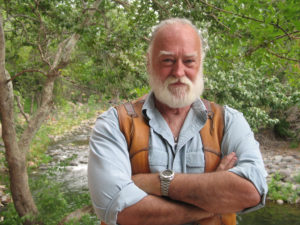 John Barnes, PT, Founder of Myofascial Release
John Barnes, PT, Founder of Myofascial Release
Visceral Manipulation
Visceral Manipulation (VM) is an advanced MFR technique that focuses on the fascial restrictions in and around the organs. For optimum function, each organ needs to move in relationship to other organs (mobility) as well as needing to physically “breathe” (motility).
Jean-Paul Barral, founder of VM, states, "The body hugs the lesion," meaning the body protects areas of restrictions and compensates around them. He estimates that 95% of musculo-skeletal problems have a visceral component. Thus, if treatment is directed only at muscles and joints, the root of the pain may be missed.
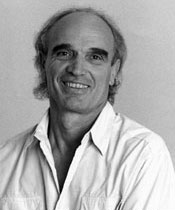 Dr Jean Paul Barral, DO, PT, Founder of Visceral Manipulation
Dr Jean Paul Barral, DO, PT, Founder of Visceral Manipulation
Lymphatic Drainage Therapy
Lymphatic Drainage Therapy (LDT) uses light pressure in a gentle, repetitive motion to facilitate the movement of lymphatic fluids. When there is swelling, water prevents proper functioning of joints because water is non-compressible. This is the principle behind hydraulics. Similarly, when there is swelling, there is stretching of the micro-vessels that support tissues and organs. The swelling reduces circulation, causing stagnation of lymph. Lymph carries immune system cells (white blood cells) as well as fats and proteins. When stagnant for a long time, the lymph fluids can congeal like gelatin in bone broth.
Joints that predict the weather are classic symptoms of lymphatic congestion. Because the lymphatic system is the body's largest drains, keeping it functioning optimally contributes not only to musculo-skeletal health but also to the well-being of the whole body.
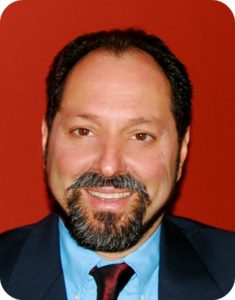 Dr Bruno Chikly, MD, DO, Founder of Lymphatic Drainage Therapy
Dr Bruno Chikly, MD, DO, Founder of Lymphatic Drainage Therapy
Zero Balancing
Zero Balancing (ZB) employs sustained, precise, and intentional touch to bring fascial balance and symmetry to the body. The entire fascial line or fascial networks can relax and reorganize around meaningful fulcrums placed on the body by gentle pressure onto bones and traction of the tissues. Zero Balancing focuses on transition zones where the skeleton transmits gravity and ground reaction forces during movement and posture. The bones hold the deepest energetic reservoirs in the body, thus, vitality is improved when the bones sing in unison.
 Dr Frederick "Fritz" Smith, MD, Founder of Zero Balancing
Dr Frederick "Fritz" Smith, MD, Founder of Zero Balancing
Bone Whispering
Bone Whispering (BW) is a technique developed by Brian Dobbs who employs mini-percussors in his clinic to release spasms occurring at the level of the bones. This technique is tremendously helpful for traumas resulting from high-force impacts.
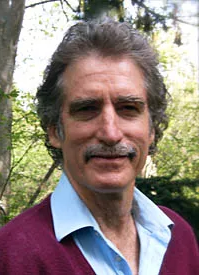 Brian Dobbs, developer of Bone Whispering
Brian Dobbs, developer of Bone Whispering
Kinesiotaping
Kinesiotaping (KT) uses a specially-designed, hypoallergenic tape that has pre-tension built in. Different tensions are generated by stretching the tape. At its lowest tension (paper-off tension), KT is used to facilitate lymphatic circulation because the 10-15% pre-tension recoils and creates spaces underneath the skin for lymphatic drainage. At higher tensions (50% or more), KT can be used to support muscles and joints. Depending on application techniques, KT can inhibit (relax) or facilitate (stimulate) muscles as well as stabilize joints. Typically, KT is well-tolerated and lasts up to 5 days.
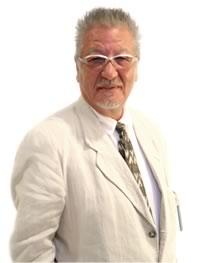 Dr Kenzo Kase, DC, Founder of KinesioTape
Dr Kenzo Kase, DC, Founder of KinesioTape
Activator Method
Activator Method (AM) allows precision in spinal manipulation by using a spring-loaded tool called the Activator. Protocols are designed to quickly assess the major dysfunctional patterns in the spine, and adjustments are made by placing the Activator on the dysfunctional segment and giving a small, quick thrust in the indicated line of drive.
Activator Method is a safe alternative to the traditional "rack and crack" method of spinal adjustment, which often misses the restricted joint so the impulse is transferred to adjacent, healthy joints. Over time, repeated misdirected impulses can cause the joint to become dysfunctional due to excessive stretching of its supporting ligaments.
 Dr Arlan Fuhr, DC, Founder of Activator Method
Dr Arlan Fuhr, DC, Founder of Activator Method
Fascial Systems Balancing
Fascial Systems Balancing (FSB) is a combination of all of the above techniques with components from Mindfulness Meditation, Insight Meditation and Qi Gong. The goal is to open up the blockages in the neuro-fascial-vascular-lymphatic systems and to restore proper consciousness to the joints, muscles and fascial systems via the proprioceptive system. With a gentle contact, the sustained pressure communicates information to the nervous system, letting it know where asymmetries exist and allowing tensions to unwind through properly placed fulcrums. Unlike SCS, CST, VM, MFR, BW or ZB, FSB is essentially and always globally oriented, not locally oriented to a particular tissue or region of the body, and this requires extreme sensitivity from the practitioner as well as patience, for 1 release can take up to 60min. Yet, once accomplished, the body achieves a new center of gravity around a particular joint or region of the body, and a new ease sets in once the nervous system updates itself.
 The entire universe lies within us
The entire universe lies within us
Therapeutic Exercise
Therapeutic Exercise (EX) aims to restore strength to muscles and balance across the joints. For a joint to move, two muscles must act in coordination. To bend the elbow, the biceps contract while the triceps relaxes. To bend the elbow while bringing a cup to the mouth requires biceps contraction, triceps relaxation, anterior deltoid contraction simultaneous with posterior deltoid relaxation, and coordination between the anterior chest wall muscles with scapular stabilizing muscles. Without precision between all the muscles involved, the tendons glide past edges of bone creating cracking and popping sensations. Over time, this sets the stage for arthritis to set in the bones.
A simple law governs the strength of muscle: when the joint is unstable, the muscle crossing that joint is made weak (Hilton's law). In this situation, the brain puts the brake on the muscle. Until the joint is stable, the muscle will remain weak from the inhibition placed on it by the brain. So, therapeutic exercise is never about how many repetitions of which exercise; therapeutic exercise is about the precise balance and coordination of critical muscles controlling certain joints in a fascial line of the body.
 "Movement is a medicine for creating change in a person's physical, emotional, and mental states." - Carol Welch
"Movement is a medicine for creating change in a person's physical, emotional, and mental states." - Carol Welch